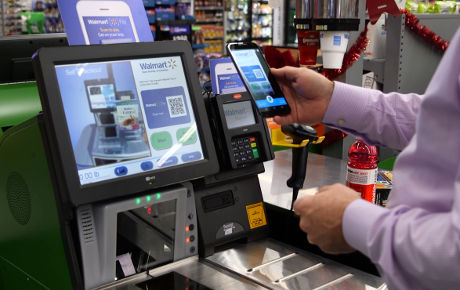Walmart Pay takes on Apple, Google and Samsung
Fret not if you forget your credit card at home the next time you visit Walmart, as you can simply pull out your smartphone and pay for groceries. It plans to launch the payment system called Walmart Pay in all 4,500-plus US stores in early next year.
It works more like Starbuck’s mobile payment solution, which has an app built around its loyalty program through which you can also add money to your Starbucks account to pay for purchases with your phone. First you needed NFC, with the likes of Google Wallet, or Android Pay, and then Apple Pay. In October, JP Morgan Chase announced Chase Pay with a planned mid-2016 launch; Samsung launched Samsung Pay in the United States on September 28. With Walmart Pay, the company hopes to improve how customers check out and “dramatically” expand mobile payment access.
Walmart Pay is available both for Android and iOS, and it’s embedded within the Walmart app that’s been available on both mobile platforms for quite some time.
Still, the new payment function is also a possible indication that Walmart could integrate with Apple Pay in the future.
Walmart is a supporter of MCX the Merchant Customer Exchange, which promotes a payment system that is retail supported known as CurrentC. Acknowledging the crowded landscape, Eckert said Walmart Pay is designed in a way to work with other solutions and perhaps accelerate what to date has been a tepid pace of consumer adoption.
“The Walmart app was built to make shopping faster and easier”, said Neil Ashe in Walmart’s news article, president and CEO of Walmart Global eCommerce.
Walmart Pay will be available for all smartphone, which has more than 22 million active monthly users, according to the company says. The existing Walmart app already allows customers to pick up an online order at a Walmart store, refill a pharmacy prescription and find an item’s location inside a store. An e-receipt will then be sent to the app.
The number of tap-capable mobile payment machines in the United States is expected to surpass 1.5 million this year.
Though their success is still far from certain, retailers are eager to create their own mobile payment systems because it will allow them to beef up their margins by avoiding credit card processing fees.








